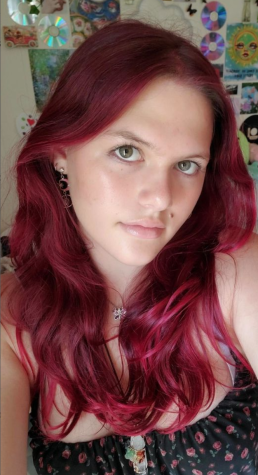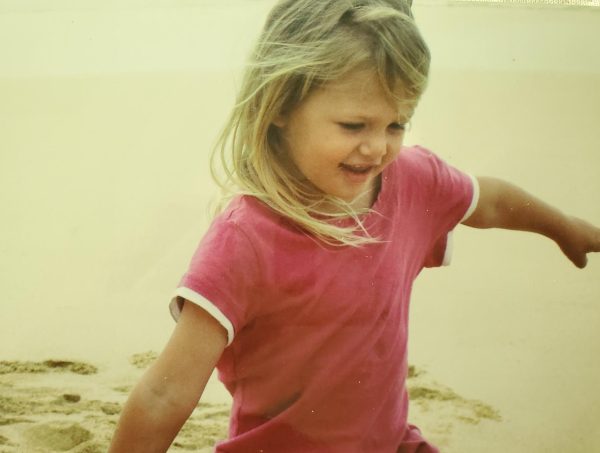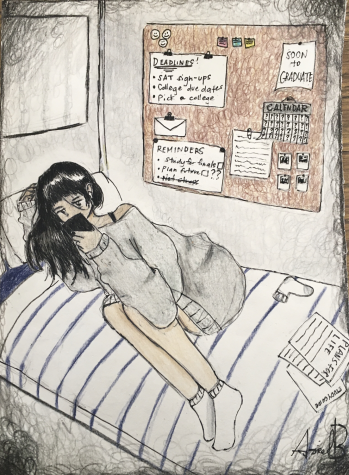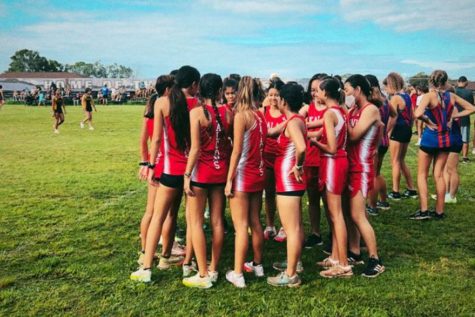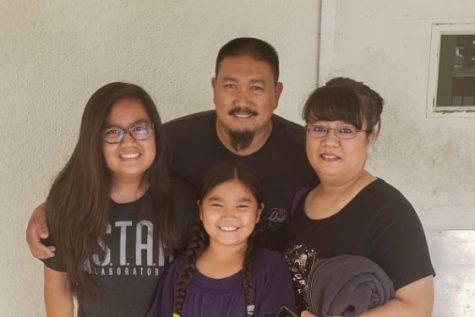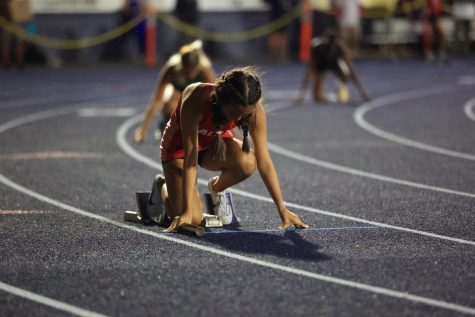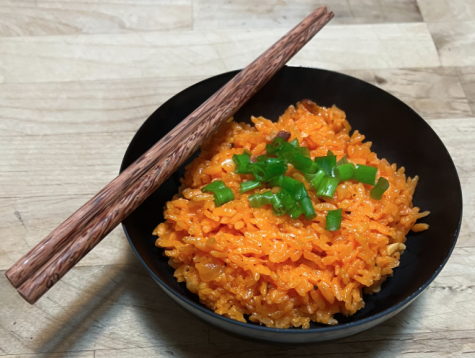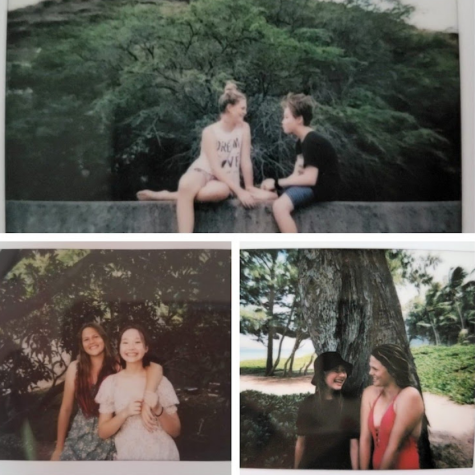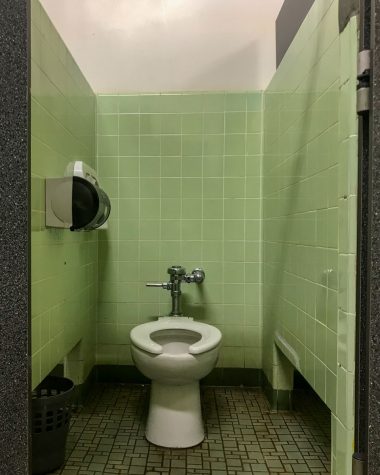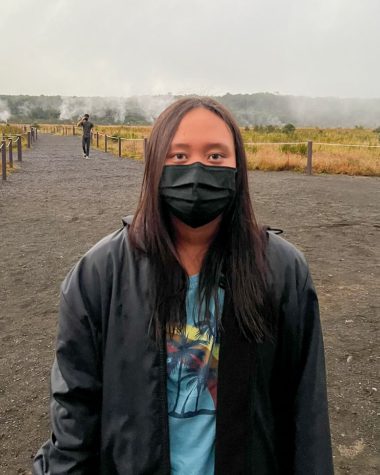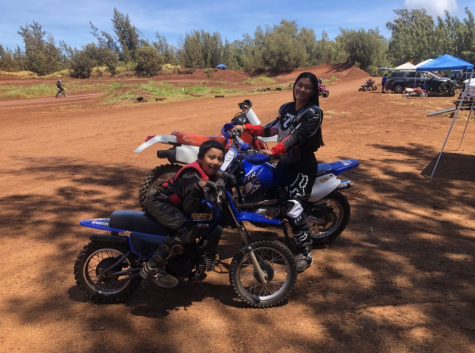An extrovert in isolation
March 22, 2022
A week into the first state-wide quarantine, I didn’t know what to do with myself. I was an anxious, sheltered 8th grader whose life consisted solely of school, homework, and volleyball.
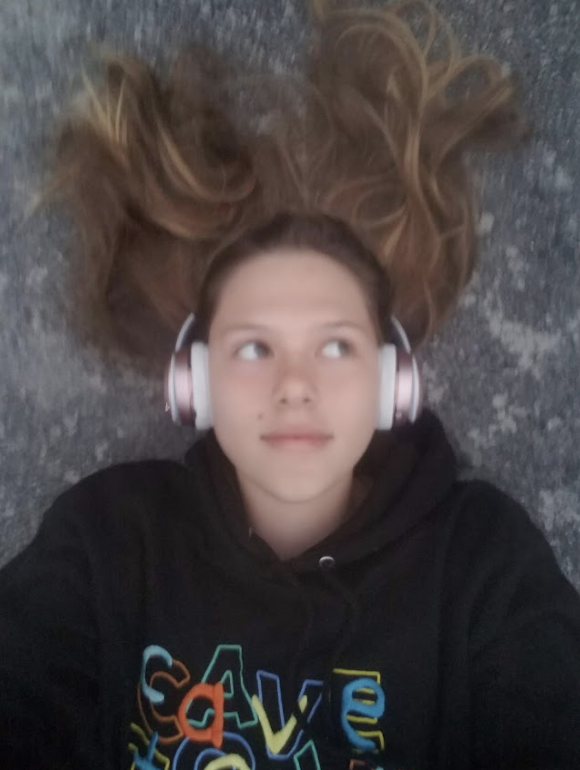
(Lily Washburn)
I was 14, and most people saw me as a bubbly, talkative, slightly annoying tryhard. I always raised my hand first, never turned in late work, and worked hard to be recognized by my teachers.
That was how it had been since elementary school. I was an absolute perfectionist who spent triple the time on assignments than necessary and worked on them until they met my unrealistically high standards.
The pressure I put on myself was overwhelming, but I had gotten so accustomed to the feeling that I hardly thought twice about it.
I was used to always having something to do, and I liked it that way. Being busy all the time meant I never had time alone with my thoughts and could get caught in the peaceful chaos of everyday life.
Every day was predictable; wake up, go to school, go to volleyball practice, go home, do homework, go to sleep, and wake up the next day to do the whole thing all over again. I found comfort in the frantic monotony of it all.
Then, during the spring break before my last quarter of middle school, COVID hit.
Suddenly, I found myself with nothing to do, nowhere to go, and no one’s thoughts to listen to but my own. With all this newfound free time, I felt stuck. I realized I didn’t know what I liked to do by myself. I had no hobbies or passions to pursue — nothing to pass the time.
As ridiculous as it sounds, when I had all the time in the world, I was more anxious than ever.
I couldn’t just sit in my room all day; I needed structure in my life. My first attempt at this was through a daily schedule.
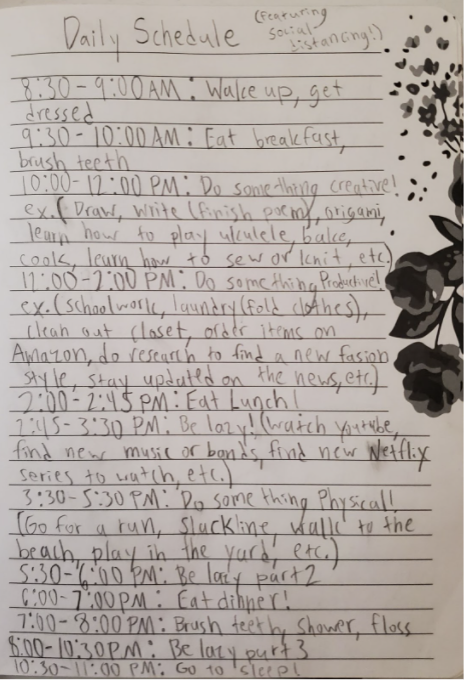
I planned out each day from the moment I woke to the time I went to sleep. I thought that if I followed a routine, I’d be able to ease my anxiety by filling up all of my time.
It seemed to work for a while. I learned a million new hobbies, found more time to go to the park and slackline, and started doing volleyball workouts in my backyard. Each week I tried something different — from making origami and balloon animals to baking scones, muffins, and cakes. I was finally getting use out of my time. Not everything stuck, but that didn’t matter to me. I was just glad that I found something to do with myself.
But as quarantine continued, I found it more and more difficult to ease my loneliness. I was scared that I would be isolated in my house for longer than I could take, that my friends would continue to grow distant, that my first year of high school would be taken away from me. Looking back, these seem like trivial problems, but, at the time, they consumed me.
I turned to music to fill my mind when I needed to distract myself from my worries. I didn’t listen to a ton of new artists. There was something comforting about listening to the same singers and bands that I had enjoyed before the quarantine. I let their music and lyrics accompany my thoughts when I couldn’t sleep —when the silence became too loud.
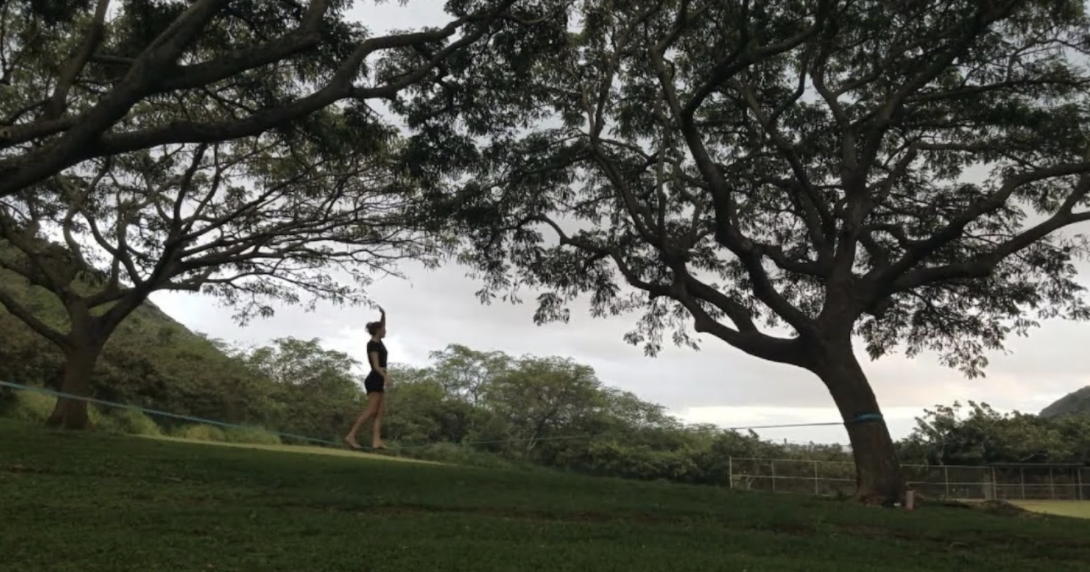
This summoned yet another hobby.
On a dull day in isolation, I decided to pick up the ukulele that had been collecting dust in my living room. I followed a “Learn The Ukulele In 10 Days” tutorial on YouTube. I remember sitting in my room and practicing switching from a C chord to a G chord to an F chord, over and over again until the strings left red indents on my fingertips. In a week, I had learned my first song, “This is Home”, by Cavetown. It was a song about learning to feel at home in your own mind and body, something that I was struggling with at the time. A month later, my camera roll was filled with ukulele videos.
Any time I had a song stuck in my head or ran out of things to do, I picked up the uke and learned a song.
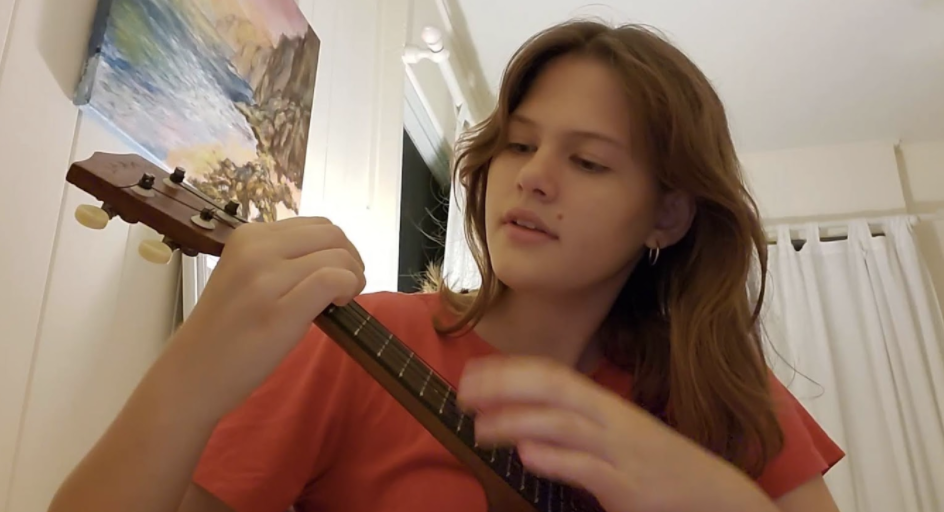
I learned a new song and recorded a video like this one sometimes multiple times a week. (Lily Washburn)
Like all of the other hobbies I had picked up in quarantine, learning the ukulele helped to pass the time. It also gave me a way to connect with my friends who I hardly saw. I would teach myself songs with lyrics that I wanted my friends to hear, record them, and send the videos to them. It was a small gesture, but it honestly made me feel a lot closer to my friends that I was worried would become distant while we were apart.
Although I still struggled with the loneliness and anxiety that came with COVID over the next two years, those first six months of isolation gave me the chance to get to know myself better than I ever had. I learned what I enjoyed, what I cared about, what worried me, and most importantly, how to be OK with being alone.

